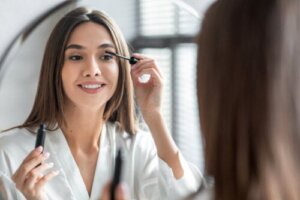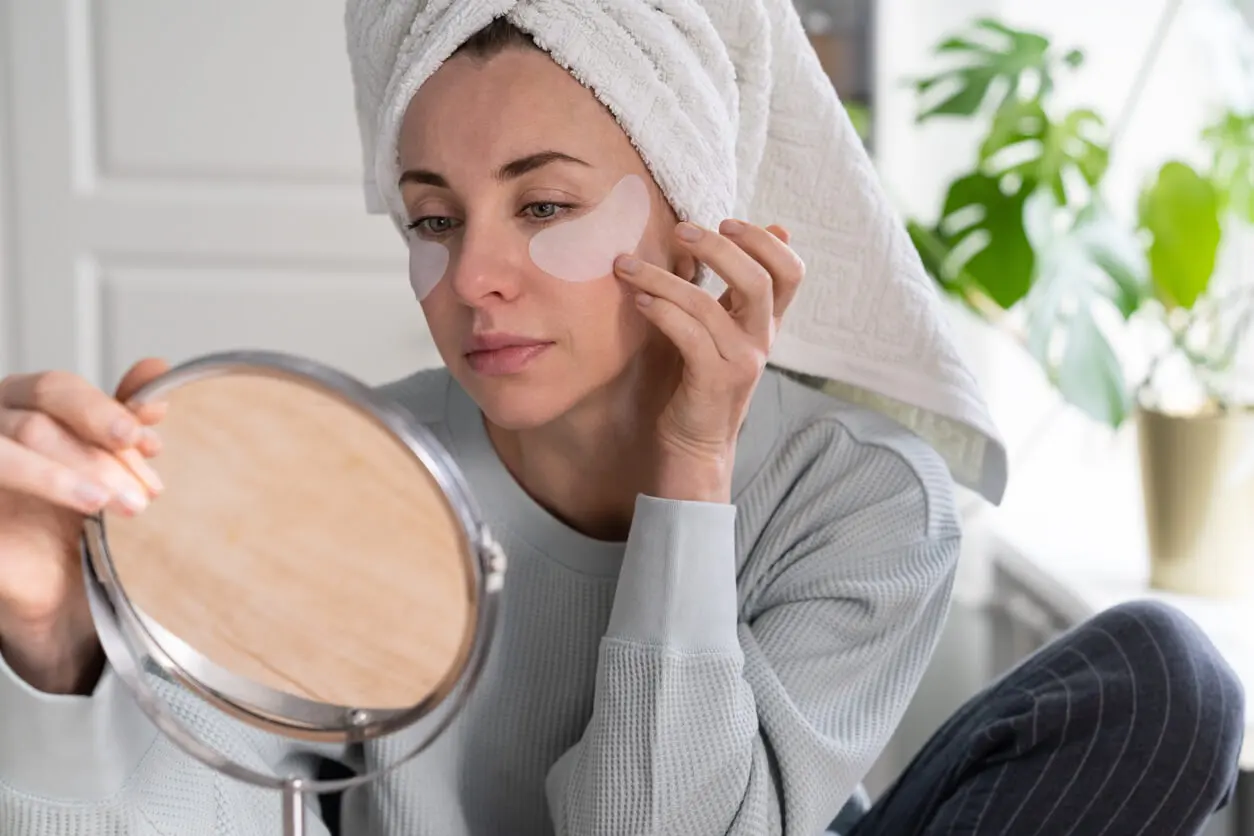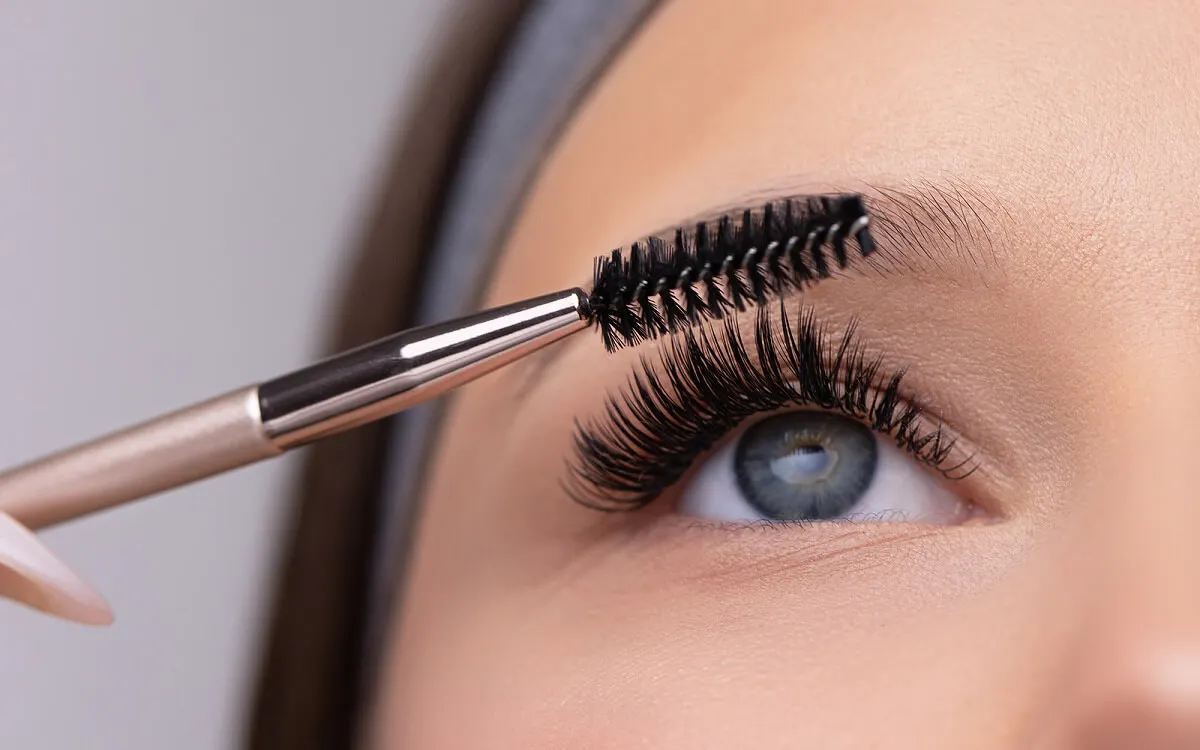Tips for Safe Makeup Around Your Eyes

Improper methods of applying products to the face, especially in the eye area, can have serious consequences for eye health. To prevent this, put into practice these recommendations that can help guarantee safe makeup application around your eyes.
Some modern touches that highlight the eyes are based on phosphorescent shadows, adhesive crystals, mascaras and eyelash extensions. Likewise, there are cosmetics that increase the likelihood of damage to the skin as vulnerable as the skin around the eyes.
In fact, Offarm magazine stresses the importance of hygiene and care in beautifying the eye area so that you look doesn’t end up ruined. Remember that the skin on your eyelids and under your eyes is the thinnest skin on your body, so it deserves careful attention.
Why is it important to apply safe makeup around your eyes?
The Spanish Academy of Dermatology and Venereology points out that the average thickness of the dermis layer near the eyes is five times thinner than the rest of the face. In addition, it’s easily damaged by continuous blinking and contains less collagen.
Because it’s so sensitive, it requires meticulous treatment, even with makeup. Excesses or inappropriate products could lead to adverse effects that sometimes even require medical intervention.

We think you may be interested in reading this, too: In What Order Should I Apply Makeup Products?
The main reactions that occur when you don’t use safe makeup around your eyes
Using cosmetics correctly means that there will be no after-effects. On the other hand, when you don’t have safe makeup around your eyes, you expose yourself to reactions such as the following:
- Irritation: During the make-up process, some particles may fall on the surface of the eyes and inflame them.
- Dry eye: This effect results from harmful chemicals. Be cautious with alcohols, preservatives, tar, and waxes.
- Allergies: According to the American Academy of Ophthalmology (AAO), allergic reactions and conjunctivitis from cosmetics often result from preservatives. The label on the item should state that it’s paraben-free.
- Lacrimal obstruction: The Mayo Clinic states that it is the clogging of normal tear drainage due to infection or inflammation. It evidences watery eyes, redness of the sclera, and blurred vision, among other symptoms. Contaminated mascara and eyeliners trigger this condition.
- Ocular dermatitis: Due to the composition of some daily use cosmetics, the skin may experience itching, edema, or erythema.
- Blepharitis: The Ophthalmological Society of the Valencian Community specifies that this disorder inflames the edge of the eyelids and sometimes requires long-term treatment.
Recommendations for safe eye makeup
Consult your dermatologist about your beauty routine, especially if you have an eye condition. It’s advisable to use makeup that’s specially created for the area around the eyes.
For example, the Food and Drug Administration (FDA) points out that the same pencil to outline the lips and eyes would pass germs from the mouth to the eyes.
Also, discard cosmetics that have been opened for more than three months and add hypoallergenic products to your list, as well as those created by recognized laboratories. It’s also a good idea to store products in cool places and always wash your hands before starting to apply them.
Write down other recommendations for safe eye care and makeup application.
1. Clean utensils
Leaving applicators (such as brushes and sponges) full of foundation, eyeshadow, concealer, or highlighter for too long encourages the growth of bacteria and fungus.
One way to sanitize utensils is to soak them in warm water and then dip them in a mixture of water with shampoo or pH-neutral soap. Rub them in the palm of your hand and let them dry upside down.
2. Check the ingredients for safe makeup around your eyes
Looking closely at what’s written on the label is the only way to know if the makeup contains ingredients that aren’t good for you. If you’re not sure about the composition, ask the seller or check the information that the manufacturers publish on their websites or social networks.
A wesite with details of all the chemicals mixed in a beauty product is International Nomenclature of Cosmetic Ingredients (INCI Beauty).
3. Don’t lend your makeup to other people
Sharing eye makeup is a mistake. Other people’s germs can get on your skin this way.
4. Use new applicators
Don’t use store testers, as every customer does this. It’s better to bring your own applicators or simply use cotton swabs. This tip is not limited to eye makeup.
Like this article? You may also like to read: The Purpose of Color Correcting Makeup and How to Use It
5. Do your makeup in an unmoving place
Try not to do your makeup in the car, even if you’re not behind the wheel. Sudden braking and falling into a pothole can put you at risk of injury while using your mascara wand or eyelash curler.
6. Watch out for additives
Eye makeup has some particular colorations. To achieve these pigments requires the use of strictly regulated additives. Avoid unapproved additives, as they alter the product and damage the skin.
The FDA summarizes in a list the color cosmetic additives accepted by the institution.
7. Pay attention to eyelash glue for safe makeup around your eyes
Eyelash extensions are all the rage because of their power to accentuate your look. This touch is safer when the glue to adhere them to the eyelid is light, doesn’t leave lumps, and is easy to clean. If the glue isn’t dermatologically approved, it increases the possibility of infection or inflammation.

What to do in case of an adverse reaction to a cosmetic?
People with sensitive skin aren’t the only ones prone to be affected by not applying safe makeup around the eyes. Anyone could suffer from a complication.
In case of an adverse effect to cosmetics, seek medical attention, especially if the symptoms persist for many days. Don’t apply any makeup while you’re healing.
All cited sources were thoroughly reviewed by our team to ensure their quality, reliability, currency, and validity. The bibliography of this article was considered reliable and of academic or scientific accuracy.
- Bonet R, Garrote A. Belleza y cuidado de los ojos. Offarm. Vol. 25. Núm. 11. España; 2006. https://www.elsevier.es/es-revista-offarm-4-pdf-13096630
- Cosméticos. U.S. Food and Drug Administration. Estados Unidos; 2019. https://www.fda.gov/consumers/free-publications-women/cosmeticos-cosmetics
- INCI Beauty. Francia. https://incibeauty.com/ingredients
- Lagrimal bloqueado. Clínica Mayo. Estados Unidos; 2021. https://www.mayoclinic.org/es-es/diseases-conditions/blocked-tear-duct/symptoms-causes/syc-20351369#:~:text=Cuando%20tienes%20un%20conducto%20lagrimal,com%C3%BAn%20en%20los%20reci%C3%A9n%20nacidos.
- Pérez Canales JL. Blefaritis. Sociedad Oftalmológica de la Comunidad Valenciana. España. https://socv.org/patologias-frecuentes/blefaritis/
- Ramírez de Arellano A. Las bolsas y ojeras tienen solución. Academia Española de Dermatología y Venereología. España; 2015. https://aedv.es/las-bolsas-y-ojeras-tiene-solucion/
- Resumen de aditivos de color para uso en los Estados Unidos en alimentos, medicamentos, cosméticos y dispositivos médicos. Administración de Alimentos y Medicamentos. Estados Unidos; 2015. https://www.fda.gov/industry/color-additive-inventories/summary-color-additives-use-united-states-foods-drugs-cosmetics-and-medical-devices
- Turbert D. ¿Qué son las alergias de los ojos? Academia Americana de Oftalmología. Estados Unidos; 2022. https://www.aao.org/salud-ocular/enfermedades/alergias
This text is provided for informational purposes only and does not replace consultation with a professional. If in doubt, consult your specialist.








